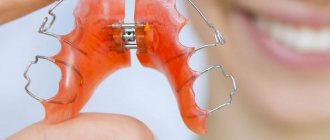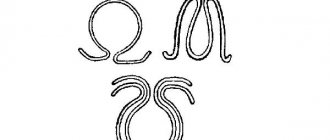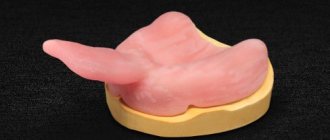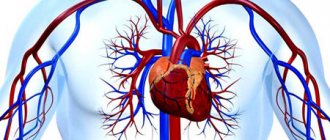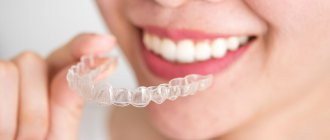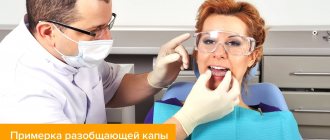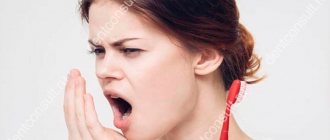To correct pathologies and anomalies of individual teeth and the bite as a whole, various orthodontic systems are used. Among them, functional devices play an important role, thanks to which it is possible to correct a variety of malocclusion pathologies and give the patient a beautiful smile.
general description
Functional orthodontic appliances are designed as devices with an inclined plane and a bite plate. Thanks to this design, pressure can be concentrated on selective teeth and thereby provoke their movement into a given position. The device begins to function only when the teeth are closed, and its effectiveness depends on the intensity of contraction of the masticatory muscles. The stronger the contraction, the more pressure is placed on the teeth.
Orthodontic structures of this type are removable and non-removable. The choice of design and the duration of its wearing depends on the type of pathology and its severity. Removable ones include Bynin's mouthguard and Katz's bite block. The non-removable ones include a Schwartz mouth guard, an apparatus and a Kurlyandsky crown. Modern orthodontics also has other functional devices, which will be discussed in detail below.
Price
Today, of all functional orthodontic devices, Bynin's mouth guard is the most affordable . This is due to the small set of consumables that are needed for its manufacture.
On average, the price range for this device is 1400 – 3500 rubles . Even in expensive clinics, the cost of its production does not exceed 4,000 rubles.
But when calculating the total amount, it should be taken into account that in addition to manufacturing the device, you will have to pay for regular correction and constant monitoring of the correction process. As a rule, this increases the cost by at least 5 thousand .
Features of the Katz bite block
The Katz bite block is a palatal structure made of plastic. In the area of the lateral teeth it is in close contact with their cervical part, and in the anterior area it is distant from them. There are 4 metal hooks extending from the front of the device. They are thrown over the edges of the four upper central teeth.
The part of the device in the area of contact with the front teeth is made in the form of an inclined plane. It is designed in such a way that the teeth slide off it and thereby gradually move forward. The structure is attached to the upper jaw on the premolars. For this purpose, special fastenings are used - clasps. The plate does not adhere to the anterior zone of the palate, so the support falls on the front teeth.
The principle of operation of the plate is to use the pressure that is created during the work of the masticatory muscles. Thanks to a well-thought-out design, when the jaws are closed, the main pressure falls on the front area of the dentition. Muscle traction, which occurs due to the forced unusual positioning of the jaw, also affects movement.
If certain conditions are met, the plate can be used to correct the entire lower dentition. To achieve this, you need to keep your jaw in a certain position - slightly extended and pulled down. The muscles will constantly tense, and the jaw will gradually shift in the required direction. Overall, this orthodontic plate is designed to correct prognathia. It works comprehensively, acting in two different directions at once:
- sagittal – mesial displacement of the teeth and the lower jaw as a whole occurs;
- vertical - the front teeth are shortened, and the lateral ones are lengthened, this happens in both rows at the same time.
Dr. Schwartz's equipment
The Schwartz mouth guard is a permanent orthodontic appliance. It is performed with an inclined plane on the cutting edges of the six front teeth of the lower row. Using it, the increased, abnormal development of the lower jaw in the central zone is inhibited, and at the same time the upper central teeth are brought forward.
The Schwartz apparatus is made from impressions individually for each patient. It reliably holds the front teeth in a constant position, so they do not move during correction. The device is used when it is necessary to move the upper teeth, which most often gives excellent results.
Schwartz's record differs from Katz's similar equipment. The main feature is that instead of reversible clasps, it is complemented by a vestibular retraction arch. To activate it, special loops are provided. Isolation is done behind the teeth being corrected. The plate is supplemented with an inclined plastic plane.
Based on the severity of the inclination of the axis of the teeth to be moved, the arch can be placed on the labial part of the crowns closer to the cutting edge, neck or in the middle. If it is necessary to expand the dentition at the same time, a screw is added to the structure. I would also like to say something about the Schwartz clasp. This is the name of a special fastening made of wire 0.6-0.7 mm thick, designed for fixing orthodontic plates in the mouth.
Wearing rules
The length of time you wear the mouth guard depends on the severity of the anomaly. But usually the effect of treatment appears quickly.
The movement of teeth from the oral position to the orthognathic (normal) can last 1-1.5 years with a mixed dentition, 1.5-3 years with a permanent one.
If during the first 10-12 days the treatment effect is not observed, the functional-passive Schwarz apparatus must be replaced with an active mechanical device.
You need to know that wearing a Schwartz mouthguard for too long can lead to incisal disocclusion due to dentoalveolar elongation.
Oral care while wearing a Schwartz appliance does not differ from the standard care used for any other type of orthodontic treatment.
You need to thoroughly brush your teeth at least 2 times a day, give up too hard foods, visit the doctor in accordance with the schedule given by him, and follow all his recommendations.
Correction with Bynin mouthguard
Bynina mouth guard is used to correct the position of the front teeth. The upper teeth move in the vestibular direction, and the lower teeth – in the distal direction. This is a single-jaw device that creates low to medium intermaxillary force. It can be used equally successfully for any type of bite to correct dentition. Requires almost 24/7 wearing. It can be removed only if absolutely necessary in order to carry out hygiene procedures or eat.
Structurally, Bynin's mouthguard is a plastic product that is worn on the lower jaw. The product covers the entire row of teeth. The mouthguard is made so that the crown relief is repeated with extreme precision. The structure is practically invisible on the teeth due to its very small thickness - no more than 1.2 mm.
An inclined plane is made in the area of the front teeth to slide the upper crowns and provide pressure. Its width is determined individually. A distinctive feature of the device is the complete absence of auxiliary small parts characteristic of orthodontic structures: arches, processes, hooks.
The mouthguard is made individually for each patient, which allows for maximum effectiveness. The main function is to create constant pressure on the teeth being corrected so that they gradually move in the desired direction. The main operating force, like other devices of this type, is the contraction of the masticatory muscles.
Indications
The main purpose of the mouth guard is to correct the mesial type bite with a change in the position of the lower jaw and its deviation forward, as a result of excessive development. The device allows you to stop the growth process of the lower jaw and restore its correct relationship with the upper jaw.
Also, the product is used for vestibular deviation of the upper anterior teeth.
The device gives a positive effect in the treatment of orthodontic anomalies with the presence of a small sagittal gap, up to 3 mm in size, and an insignificant depth of overlap of reverse incisors.
Features of the Kurlyandsky apparatus
The Kurlyandsky apparatus is used to correct palatal anterior teeth. It includes two crowns for the central anterior teeth of the lower jaw. On the side facing the lip, a wire is soldered to them horizontally to cover the six front teeth. On the opposite side there are tubes for fixing the guide plane, which has a curved shape. The material for production is wire.
The device moves the teeth in the sagittal direction. The plane is made removable, this helps to control the progress of the correction. The device is worn constantly, but the inclined plane can be removed at night.
Correction with Kerbitz vestibular plate
The vestibular plate of Kerbitz is adjacent to the corresponding surface of the teeth to the transitional folds of the mucous membranes. A plate is needed to move the upper row of front teeth in the palatal direction. Due to the thoughtful design, mucous tissues are not injured.
For the cutting edges of the upper incisors, a small plastic step is made in the area of the plate adjacent to the vestibular surface of the crowns. This ensures the stability of the structure and prevents it from slipping. To expand the row from the remaining teeth, a certain distance is maintained.
Construction and use of the Kraus plate
The Kraus plate is used in open bites to restore the physiological position of the teeth. This pathology usually develops in children if they have the habit of sucking their tongue or have impaired swallowing functions. The device consists of two plates (upper and lower), fastened with pieces of wire. It is fixed between the canines, incisors, and first primary molars.
There is a second design model, which differs fundamentally only in the location of the wire sections. It involves the lateral surface of the last lower molars in the retromolar region. This is done to securely secure the forward jaw. This type is more suitable for correcting distal occlusion in the formative stage, provided that the child has all the teeth.
Features of Schonherr's vestibular plate
The Schonherr vestibular plate is used for open and distal bites with protruding incisors and a narrow upper dentition. These pathologies occur in children as a result of a number of habits. For example, if they often suck their thumb, bite their lower lip, or breathe through their mouth.
Pathologies that develop in children due to the above reasons can spontaneously resolve after changing the bite to a permanent one. Therefore, the plate is aimed not only at eliminating bite defects. First of all, the device is used to wean from the listed bad habits. In addition, the plate normalizes the functions of the muscles of the perioral cavity. The device is available in 3 sizes for use by children of different ages.
Reviews
Kappa Schwartz is considered a simple and effective remedy for the treatment of moderate retrusion of the upper anterior teeth.
This anomaly is relatively rare (much less common than protrusion), so there are not so many people who have tried treatment with the Schwartz mouthguard.
If you are one of them, tell us how your treatment with the Schwartz mouthguard ended, and whether any problems arose. Comments can be left at the bottom of this page.
If you find an error, please select a piece of text and press Ctrl+Enter.
Tags: bite correction plates for teeth straightening
Did you like the article? stay tuned
Previous article
Learn more about the positive and negative aspects of the Deflex denture
Next article
The Osamu retainer is an example of the highest quality and effectiveness

